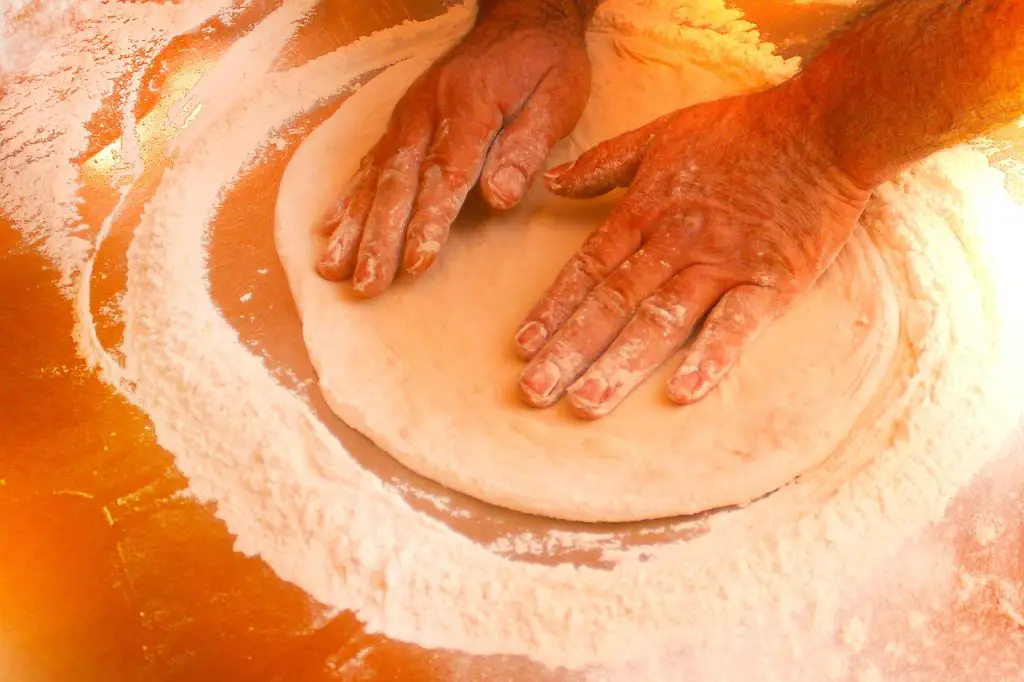Pizza is undoubtedly one of the world’s most beloved dishes, with countless variations and toppings to suit every palate. While ordering pizza from your favorite pizzeria is convenient, there’s something truly satisfying about crafting your own homemade pizza from scratch. One essential element of this culinary adventure is the pizza dough, and making it at home can be a rewarding experience. In this comprehensive guide, we will take you through the step-by-step process of making homemade pizza dough that is easy, delicious, and customizable to your preferences.
Why Make Homemade Pizza Dough?
Before we delve into the nitty-gritty of pizza dough-making, it’s essential to understand the benefits of making it from scratch:
Quality Control: When you make pizza dough at home, you have complete control over the quality of ingredients, ensuring that you use the best flour, water, yeast, and seasonings available. This control over ingredients can lead to a superior end product.
Freshness: Homemade pizza dough is always fresher than store-bought alternatives. You can prepare it just before you plan to bake, resulting in a better texture and flavor.
Customization: Homemade pizza dough is highly customizable. You can adjust the thickness, flavor, and texture of the dough to match your personal preferences, ensuring a perfect pizza every time.
Cost-Effective: Pre-made pizza dough can be pricey. Making your own is a cost-effective alternative that can save you money in the long run.
Fun and Rewarding: Making pizza dough from scratch can be an enjoyable and rewarding culinary experience. It allows you to connect with the cooking process and gives you a sense of accomplishment when you see the final product.
Now, let’s dive into the step-by-step process of making homemade pizza dough.
Ingredients You’ll Need:
To make a basic homemade pizza dough, you’ll need the following ingredients:
2 1/4 teaspoons (7g) active dry yeast
1 1/2 cups (355ml) warm water (about 110°F/43°C)
3 1/2 cups (420g) all-purpose flour
2 tablespoons olive oil
2 teaspoons sugar
1 1/2 teaspoons salt
Step 1: Activate the Yeast
Start by activating the yeast. In a small bowl, combine the warm water and sugar. Stir until the sugar is dissolved. Sprinkle the yeast over the warm water mixture and let it sit for about 5-10 minutes until it becomes frothy. This frothing indicates that the yeast is active and ready to use.
Step 2: Combine Dry Ingredients
In a large mixing bowl, combine the flour and salt. Make a well in the center of the flour mixture. This is where you’ll pour the yeast mixture and olive oil.
Step 3: Mix the Dough
Slowly pour the yeast mixture and olive oil into the well you created in the flour mixture. Use a wooden spoon or your hands to mix the ingredients until they come together and form a sticky dough.
Step 4: Knead the Dough
Turn the dough out onto a lightly floured surface. Knead the dough for about 5-7 minutes until it becomes smooth and elastic. This process helps develop the gluten in the dough, giving it structure and a chewy texture.
Step 5: Let It Rise
Place the dough in a lightly oiled bowl, cover it with a clean kitchen towel or plastic wrap, and let it rise in a warm, draft-free place for about 1-2 hours or until it has doubled in size. This rise allows the yeast to ferment and develop flavor.
Step 6: Preheat Your Oven
While the dough is rising, preheat your oven to the highest temperature it can go. This is typically around 500°F (260°C) or higher if possible. If you have a pizza stone, place it in the oven while it preheats.
Step 7: Shape the Dough
Once the dough has doubled in size, punch it down to release any air bubbles. Turn it out onto a floured surface and divide it into the number of pizza crusts you want to make. This recipe typically makes two 12-inch (30 cm) pizzas or four personal-sized ones.
Roll out each portion of dough to your desired thickness, whether you prefer a thin and crispy crust or a thicker, chewier one.
Step 8: Add Your Toppings
Now comes the fun part – adding your favorite toppings. Whether you’re a fan of classic Margherita with tomato sauce, mozzarella, and basil or you prefer more adventurous toppings, the choice is yours. Be creative and experiment with various combinations.
Step 9: Bake
Carefully transfer your pizza(s) to a preheated pizza stone or a baking sheet lined with parchment paper. Bake in the hot oven for about 10-15 minutes, or until the crust is golden brown and the cheese is bubbly and lightly browned.
Step 10: Enjoy!
Once your homemade pizza is out of the oven, let it cool for a minute or two before slicing and serving. Share the joy of your freshly baked creation with family and friends.
Tips for Perfect Homemade Pizza Dough:
Use a kitchen scale: For the most precise results, measure your ingredients by weight rather than volume.
Quality matters: Invest in high-quality flour and olive oil for the best flavor and texture.
Don’t rush the rise: Allowing the dough to rise thoroughly is essential for flavor development. You can even refrigerate the dough for a slow rise if you have more time.
Experiment with toppings: Homemade pizza is your canvas; get creative and try different toppings, sauces, and cheeses.
Preheat the oven and pizza stone: A hot oven and preheated pizza stone (if available) are crucial for achieving a crispy crust.
Homemade pizza dough is the foundation of a delicious homemade pizza. With a few simple ingredients and some patience, you can create a versatile dough that suits your preferences and allows for endless topping possibilities. Making your own pizza dough not only saves you money but also provides a sense of accomplishment and a truly enjoyable cooking experience. So, roll up your sleeves, get ready to knead, and embark on a journey to create the perfect homemade pizza from scratch.
Troubleshooting Common Pizza Dough Issues:
While making homemade pizza dough is relatively straightforward, beginners may encounter a few common issues. Here are some troubleshooting tips to help you overcome them:
Dough too sticky: If your dough is excessively sticky during the kneading process, gradually add a bit more flour (a tablespoon at a time) until it becomes manageable. Conversely, if it’s too dry and crumbly, add a touch more water.
Dough not rising: If your dough doesn’t rise properly, it might be due to inactive yeast, cold room temperature, or not giving it enough time. Ensure your yeast is fresh and that you’ve allowed ample time for rising in a warm environment.
Tough or dense crust: Over-kneading the dough can lead to a tough and dense crust. Be sure to knead it just until it’s smooth and elastic, not longer than necessary.
Uneven crust: If your pizza crust is thick in some areas and thin in others, pay extra attention while rolling it out. Try to maintain an even thickness across the entire crust.
Soggy crust: To prevent a soggy crust, preheat your oven and pizza stone adequately. Additionally, avoid overloading the pizza with too many wet toppings, as this can release excess moisture during baking.
Burnt toppings: If your crust is perfectly baked, but your toppings are getting burnt, consider adding the toppings later in the baking process or reducing the oven temperature slightly.
Advanced Pizza Dough Variations:
Once you’ve mastered the basic pizza dough recipe, you can experiment with various styles and flavors:
Whole Wheat Pizza Dough: Substitute some or all of the all-purpose flour with whole wheat flour for a nuttier and heartier crust.
Herb-infused Dough: Add dried herbs or spices like rosemary, oregano, or garlic powder to your dough for an extra layer of flavor.
Cauliflower Pizza Crust: For a low-carb alternative, try making a pizza crust using cauliflower rice. It’s a gluten-free option that’s surprisingly delicious.
Sourdough Pizza Dough: If you have a sourdough starter, incorporate it into your pizza dough for a unique tangy flavor.
Stuffed Crust Pizza: Take your pizza to the next level by rolling cheese or other fillings into the edges of the dough to create a stuffed crust.
Grilled Pizza: Instead of baking, grill your pizza dough for a smoky flavor and charred crust.
Gluten-Free Pizza Dough: Explore gluten-free flours like rice flour, almond flour, or a gluten-free flour blend to cater to dietary restrictions.
Making homemade pizza dough is a rewarding culinary adventure that allows you to customize your pizza just the way you like it. With a little practice and the tips provided in this guide, you can craft the perfect pizza dough, achieving a balance between a crispy exterior and a tender, flavorful interior. Remember that making pizza dough from scratch is as much about the journey as it is about the final product. So, embrace the process, experiment with flavors, and enjoy creating delicious homemade pizzas that will be cherished by family and friends for years to come. Whether you prefer classic Margherita or extravagant gourmet combinations, homemade pizza is an art form that you can master in your own kitchen. Happy baking!




